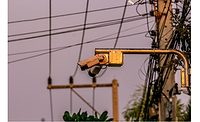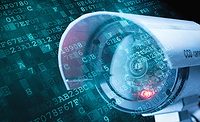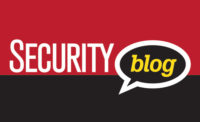There are a number of aspects of 'conventional wisdom' in the realm of physical security that just don't add up, that smack of having their origins in "the salesman made me do it," which under close scrutiny turn out to be absolutely backwards or even dangerous. One of the most prevalent is the upside down priority given to quality video in surveillance installations when comparing 'live' to 'recorded' video views.
A bit of background: most all surveilance installations have not one, but two types of video: live, and recorded. The 'live' video is being watched real-time, at that moment, by a human operator. Eyes on screens type of thing. The other type is recorded video, that which you go look at when asked to "check the tapes", investigate an incident, provide background and information, or determine if something nefarious might have happened. Once you think about it, most people realize that the ratio of 'live' to 'recorded' is about 999 to 1. Most video is never seen by human eyes unless it is needed, after something has happened. Consider a standard surveillance operation in a well-structured, Fortune 500 company campus, such as Altera, Inc. Manager of Security, Bill Impellizeri, has 165 cameras spread across five buildings in the San Jose, CA campus. And for any given shift, there is an average of only one operator on duty in the security operations center. Most studies on this topic have borne out that human beings can effectively watch about four cameras at a time, which means that at any given point in time, about 2.5% of Altera's video is actually being watched live. That is when they are not at lunch, doing reports, or handling incidents. And by the way - Altera is well ahead of most commercial organizations, where there are normally no people watching live video feeds.
Further, we have to understand that there are actually two generic uses for surveillance video: situational awareness, and forensic use. Situational awareness is to alert the customer that something is awry (people being where they shouldn't be, someone with a firearm, trucks at the back gate loading things they shouldn't be, etc.). This doesn't have to be of 'facial recognition' quality, as this is serving as the 'trigger' to take further action. Situational awareness video is all about timing and action.
The second use, forensic use, is when the video is recalled to investigate, analyze, and create proof. This is when it's imperative that the video allows the user to identify specific people, read license plates, or see other fine-grain detail. Forensic use video is all about quality.
The problem: most customers have set up their video quality settings entirely backwards. They will have, for instance, cameras set to 4CIF, 15 frames per second at 'high quality' compression settings for live view, while those same cameras are being recorded at 5 frames per second, 'medium’ or ‘low’ quality compression so the video will make it to 30 or more days of video on the DVR recording system. In fact, we have spoken with several companies that are recording at 2 CIF or lower. This often happens because the integrator underestimated the storage needed and because the project was already at budget, and there were no dollars available to add storage.
When there is an incident, the common response is "let's go check the video". And, when this is done, the user finds that the video is often rough, grainy, and of little value...and oh, by the way, far worse than what is showing on the screen at the time.
Many customers have been misled by manufacturers to adopt an 'upside down' perspective of their video settings, whereby they have rich, high-quality 'live' view feeds (which look really good when the boss comes by), and then much lower quality 'recorded' video (in an effort to save storage and system costs). So these customers are going along happily thinking that they are well protected, and only find out that their video quality is inferior after there has been an incident when it is too late to correct the quality.
What should a customer do in order ensure that they have the proper protection levels, and that their security investment isn't wasted? Follow these simple steps:
- Understand that there are two different uses for surveillance video: situational awareness, and forensic.
- Understand that 'live view' is with few exceptions about situational awareness, and 'recorded' is about forensic
- Ensure that your system is set up properly with the appropriate level of quality applied to 'recorded' video, which should always be as good or even better than situational-awareness 'live' video feeds
- If you system is aging, look at some of the newer technologies that can allow you to retain rich, high-resolution video for an extended period of time (extending your protection) without having to eat up massive amounts of expensive DVR/NVR storage.
Don't let a salesman flip your surveillance quality upside down. After all, it's not his problem when you can't provide good video after an assault or theft - it's yours.



